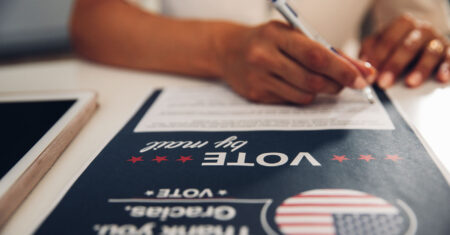By Stacy M. Brown
Black Press USA Senior National Correspondent
You can try to bury people. You can rewrite their history books, close their schools, and burn their libraries. You can pass laws that punish truth-tellers and silence teachers who dare speak the name of freedom. But you cannot silence color. You cannot silence the wall. Across this country, in cities both proud and scarred, the story of Black America refuses to die. It is written not in the ink of permission, but in the paint of defiance. It rises on concrete, brick, and steel. The murals speak where the history books fall silent.
Philadelphia, the so-called birthplace of America, has become a vast open-air scripture of the Black experience. On its walls, the dead rise again, the forgotten are called by name, and the children of this century inherit the truth their nation keeps trying to erase. Mural Arts Philadelphia has filled the city with living testimony. The Colored Conventions: A Buried History calls back the men and women who, long before Emancipation, gathered to demand that their humanity be recognized. The Legacy of Bishop Richard Allen reminds every passerby that resistance can begin with a single step away from the back of a segregated church.
Across Germantown Avenue, Harriet Tubman & the Underground Railroad stands as both memory and prophecy. Nearby, Octavius Catto returns through Remembering a Forgotten Hero, his face no longer hidden in the shadows of history. And then there is Dr. J, the mural of Julius Erving not as an athlete but as a man—a man of dignity, intellect, and command. These walls do not whisper; they roar. In Baltimore, the paint itself breathes. The city holds a long lineage of African American creativity, from the classrooms of Morgan State University to the heart of the Black Arts District along Pennsylvania Avenue. The murals of Ernest Shaw tower above streets once broken by neglect, affirming that art can be armor and prayer all at once.
Baltimore’s artists work in the spirit of survival. They know that the paintbrush, in the hands of the oppressed, becomes a weapon sharper than any blade. Their colors speak to a people long told to be invisible, declaring instead, We are still here. Out west, Los Angeles wears its resistance across miles of concrete. Its murals were born in the heat of rebellion and the ache of inequality. The artists of SPARC, the Social and Public Art Resource Center, took what was once the language of graffiti and turned it into gospel.
Charles “Boko” Freeman’s Return to the Light reflects a hunger for justice, while Noni Olabisi’s To Protect and Serve lays bare the truth of state violence. City officials tried to silence her, but her work still stares down the same forces she painted against. Alice Patrick’s Women Do Get Weary But They Don’t Give Up honors the women who built the bones of America: Mary McLeod Bethune, Dorothy Height, Josephine Baker, and Oprah Winfrey. Women who carried nations on their backs and never complained of the weight. These murals are not decorations. They are sermons painted in public view, declaring that beauty without justice is a lie.
In Topeka, Kansas, across from the sacred ground of Brown v. Board of Education, a mural calls the people to remember the battle that opened the schoolhouse doors. In Birmingham, Alabama, the colors stretch across old segregation lines, transforming the streets of suffering into streets of pride. In Jacksonville, Florida, the likenesses of A. Philip Randolph, Zora Neale Hurston, and James Weldon Johnson speak to the city’s long lineage of brilliance. These are not mere portraits; they are warnings and promises painted on brick. At St. Louis Lambert International Airport, a mural spans 51 feet of history. Black Americans in Flight tells of men and women who defied both gravity and hatred. Created by Spencer Taylor and Solomon Thurman, it chronicles the Tuskegee Airmen, astronaut Mae Jemison, and Ronald McNair, who perished in the Challenger explosion but are not remembered. Every panel sings of ascent. It is a mural that tells every traveler what America owes to those who lifted her higher than she deserved to go.
Even in the seat of power, where politics tries to silence the soul, the walls still speak. At The Wharf, artist Shawn Perkins painted portraits of Benjamin Banneker, Marvin Gaye, and Reverend Anthony Bowen, each one a local monument to a greater story. Just blocks away, the “Black Lives Matter” mural once stretched across the pavement like a hymn of protest, bright yellow and unyielding. Before Mayor Muriel Bowser was forced to capitulate to Donald Trump and remove the plaza, it pointed straight toward the White House as if to remind those inside: This nation was built by hands it tried to chain. Before any of these murals, there was Aaron Douglas. In 1934, his series Aspects of Negro Life told the story from the shores of Africa through the slave ships and into the modern city. His art carried the weight of memory and the hope of deliverance. Douglas painted the very thing this country still refuses to see: that Black life is America’s most enduring masterpiece.
The murals that cover this nation are not ornaments. They are testaments. They are the faces of ancestors who will not fade. Each brushstroke defies the lie that our story can be rewritten. Each color insists that our memory cannot be outlawed. Black history is not a month. It is not a chapter. It is a mural that stretches across the American conscience, daring anyone to paint over it.






